Under the microscope: E.T. Interplanetary Mission (PlayStation)
In which the beloved movie alien condemns terrorism in very colorful terms
It’s a Saturday morning in October of 2001. I’m at a high school cross country meet in the Midwestern United States, warming up with my team for the race that’s about to start. Suddenly, a shout rings out: “Oh no!”
The shout was from one of the parent volunteers. “We don’t have enough flag stickers!” she explains, panic in her voice. She had, of course, been putting American flag stickers on our race bibs in honor of 9/11.
“Don’t worry,” another parent said. “I’ve got more.” He went to his truck to retrieve them — crisis averted. Everyone was relieved.
Why am I bringing this up in an article about reverse engineering old video games? Well, as a partial explanation of this image:
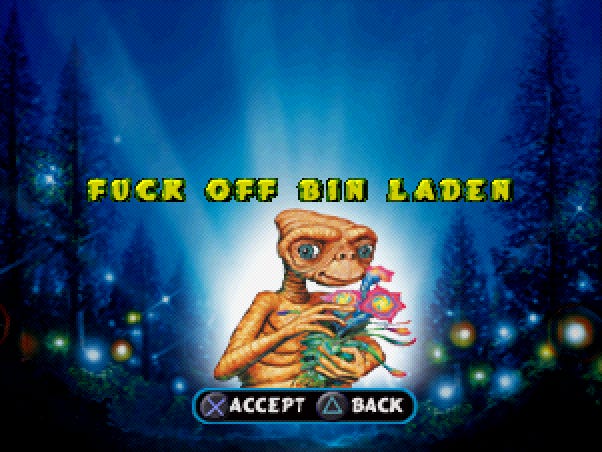
Look, it was a strange time. There were anti-Taliban songs on the radio. Video games featuring airplanes were being canceled. Movies were being hastily edited and re-shot. Even old movies were getting altered — a new version of E.T. the Extra-Terrestrial was released in 2002, and in one scene the word “terrorist” is replaced with “hippie.”
That brings us to the topic at hand: that anniversary edition of E.T. was accompanied by a video game adaptation, E.T. Interplanetary Mission. This E.T. game was better received than the first one, but hasn’t managed to hold much interest in the years since it came out.
I took a look at this game, however, and found some things that held my interest:
The message about Osama Bin Laden above.
A cheat code that gives you 100 lives.
A hidden model editing screen.
Details on how to access these in-game — and on the reverse engineering involved in finding them — are below.
The secret credits
To get to the Bin Laden screen, first start a new game. In the first stage, approach each of the flowers with the D-pad. Press Circle to activate them, then stand next to them to pick them up them:
Once you’ve collected the fourth flower, you’ll be taken to the next stage. Before doing anything there, press Start and choose Exit from the pause menu.
You’ll be returned to the main menu. Choose Options and then enter this sequence:
R2, R1, L2, L1A new item will appear — Credits:
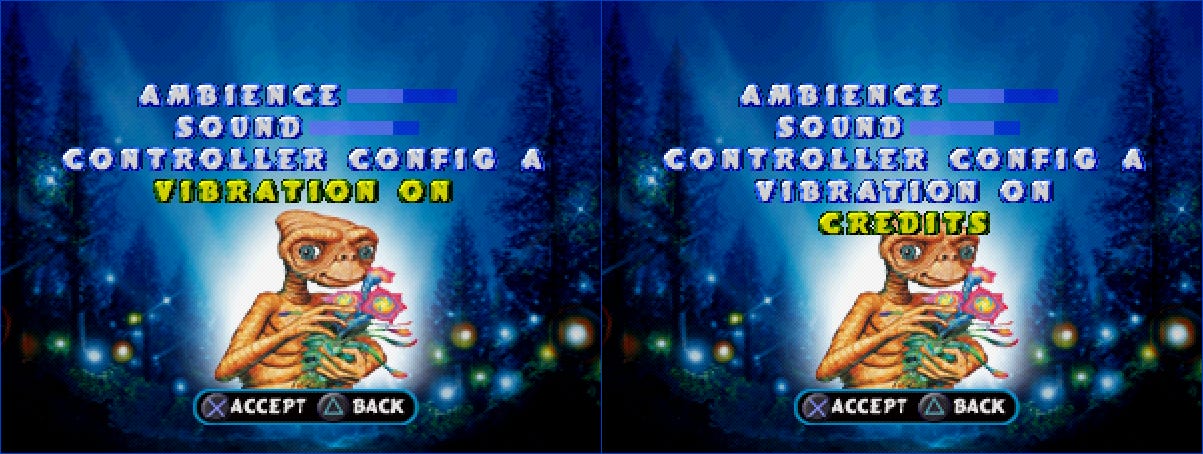
Select it to see the staff roll:
The Bin Laden message is at the end, as shown in the video above. I presume it was put in by Diego “Egg” Link. Or possibly Mark “Beno” Bell? I’d love to know — I reached out to both of them, but didn’t get a response.
This trick works in both the NTSC-U and PAL versions of the game.
100 Lives
The game recognizes another cheat code. Enter this sequence at the title screen:
L2, L1, R2, R1When you start the game you’ll have 100 lives:
The graphics editor
I found one more hidden thing in this game — there’s an “Edit graphics” screen that was presumably used by the developers:
This isn’t accessible with a cheat code, alas. Changing a single memory address during gameplay makes it show up, though. 80077d38 (NTSC-U version) is usually 0x04 while you’re controlling E.T. Setting it to 0x01 makes the menu appear.
Technical details
I found these screens by examining a memory snapshot from the Mednafen debugger:
You can see in the debugger screenshot that there are neighboring strings that seem to be part of a staff roll. Looking for things related to that, I found:
8007788c "CREDITS"Loading the memory snapshot into Ghidra allowed me to trace that string to the function at 80033bb8. Setting an execution breakpoint for that function’s address in Mednafen’s debugger showed that it’s active on the Options screen.
Part of the Options screen handler function has logic like this (pseudo-Python adapted from Ghidra’s decompilation):
if DWORD_800777e4 != 0x00000000:
... # Some input handling code
print_string("CREDITS")That is, if the value at 800777e4 is nonzero, the Credits menu item shows up. Later in the function is the logic that sets that value:
if (pressed_button !=0) and (flower_count == 0x04):
if (cheat_counter == 0) and (pressed_button == R2_BUTTON):
cheat_counter = 1
elif (
((cheat_counter == 1) and (pressed_button == R1_BUTTON)) or
((cheat_counter == 2) and (pressed_button == L2_BUTTON))
):
play_sfx(0x18, 0, 0)
cheat_counter += 1
elif (cheat_counter == 3) and (pressed_button == L1_BUTTON):
play_sfx(0x17, 0, 0)
DWORD_800777e4 = 0x00000001That’s the cheat code handling. If press the buttons in the right order, a counter increments and a sound effect plays. When the fourth button is pressed, the value that activates the Credits item is set.
There’s very similar code in the function at 80032f8c, which handles input at the title screen.
For the graphics editor, I noticed these strings:
80011704 "EDIT ATTRIBUTES"
80011714 "EDIT GRAPHICS"Tracing references to them in Ghidra led to the function at 80020678, which gets called if 80077d38 is 0x01. That value is something like “game state” — 0x04 is normal gameplay; 0x06 signals the end of a stage; and 0x07 is “game over.”
Outro
Putting “Fuck off Bin Laden” in your video game seems weird now, but I think it probably made sense at the time. The Onion ran an article in September, 2001 called Not Knowing What Else To Do, Woman Bakes American-Flag Cake. If your medium was cake, you expressed your feelings in frosting. If your medium was video games, you expressed them in Easter eggs.
I wonder if the game would have been pulled from shelves if the credits Easter egg had been published in 2002? Hidden content in Grand Theft Auto: San Andreas caused some trouble a few years later. Maybe copies this E.T. game would have to have been sent to landfills too.
I do these articles about retro game reverse engineering every week. Here are some others you might enjoy:
Subscribe to get the next one as soon as I publish it:
Feel free to use the information and screenshots in this article on your favorite reference site or fan page. You may use the video if you link back to this article.
Many thanks to my friends Lee and Michael for reading the first draft of this article and providing feedback. And thanks as always to Ashlyn Anstee for the Rings of Saturn logo.

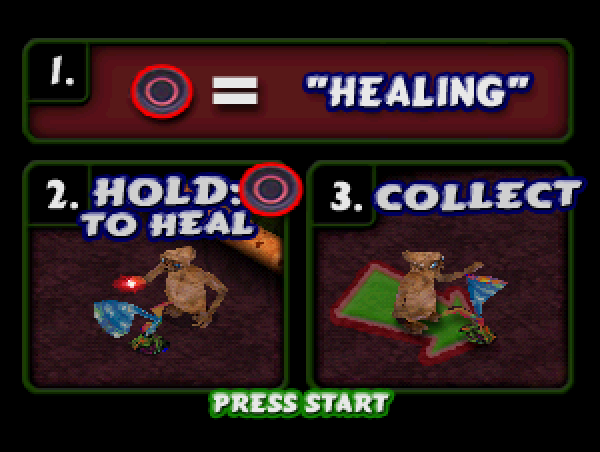


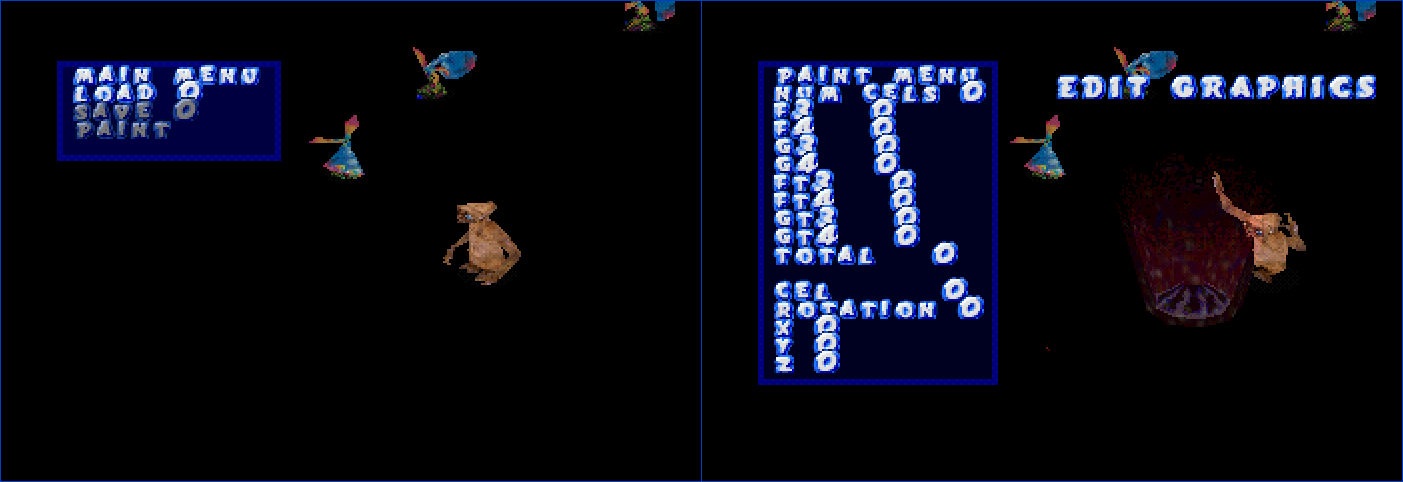
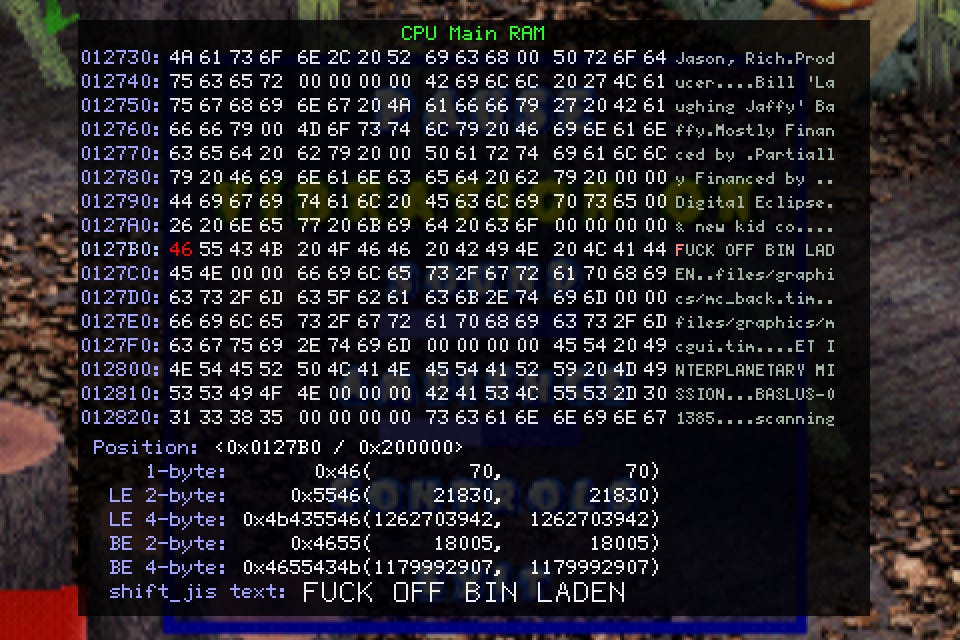
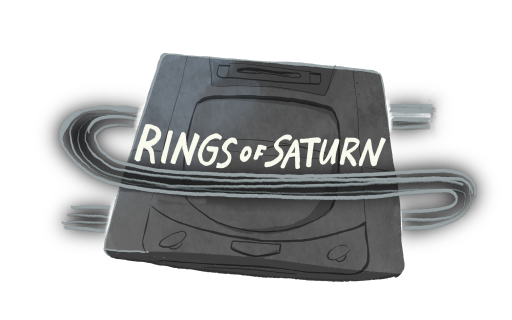
I forgot all about this Egg. We originally had normal "clean" credits in there, like every game we had ever put out but either Sony or Universal told us to pull them out because "blah blah corporate b.s. i.e Spielberg's second cousin might be annoyed" and thus we couldn't have our credits...., so in a way the publishers forced our hand to put credits as part of an easter egg - and as an easter egg .. well... out went the censorship too - we were kinda bitter as it was a "low pay, hard work" gig. The F'off Bin Laden is a bit of time capsule and part of the zeitgeist of the U.S. It was a Mark Beno Bell touch but the team all approved. To answer the question as to why there was actually another ET game put out, it was the 10th anniversary of the movie and they re-released in theaters in 2011 as well, a cash grab of sorts. The game isn't very good but the best thing about it is this: You go in to 5 planets and in each the inhabitants attack you at first - you(ET) then heal or fix something on the planet and then the inhabitants have a change of heart and befriend you. A "turn the other cheek" type of game concept which I thought was unique. i.e not GTA - and yet at the time we were going to war in the different country than who attacked us for a terrorist act funded by an ally - irony is not dead.
Great write up and good work on reverse engineering. RIP: Fravia+ BTW, you would have been hired at SCG, Playstation documentation at the time was actually a job in reverse engineering.
AVGN just released a video about the game, in which he talks about the Bin Laden code: https://www.youtube.com/watch?v=B9MZ0lmZ4pg